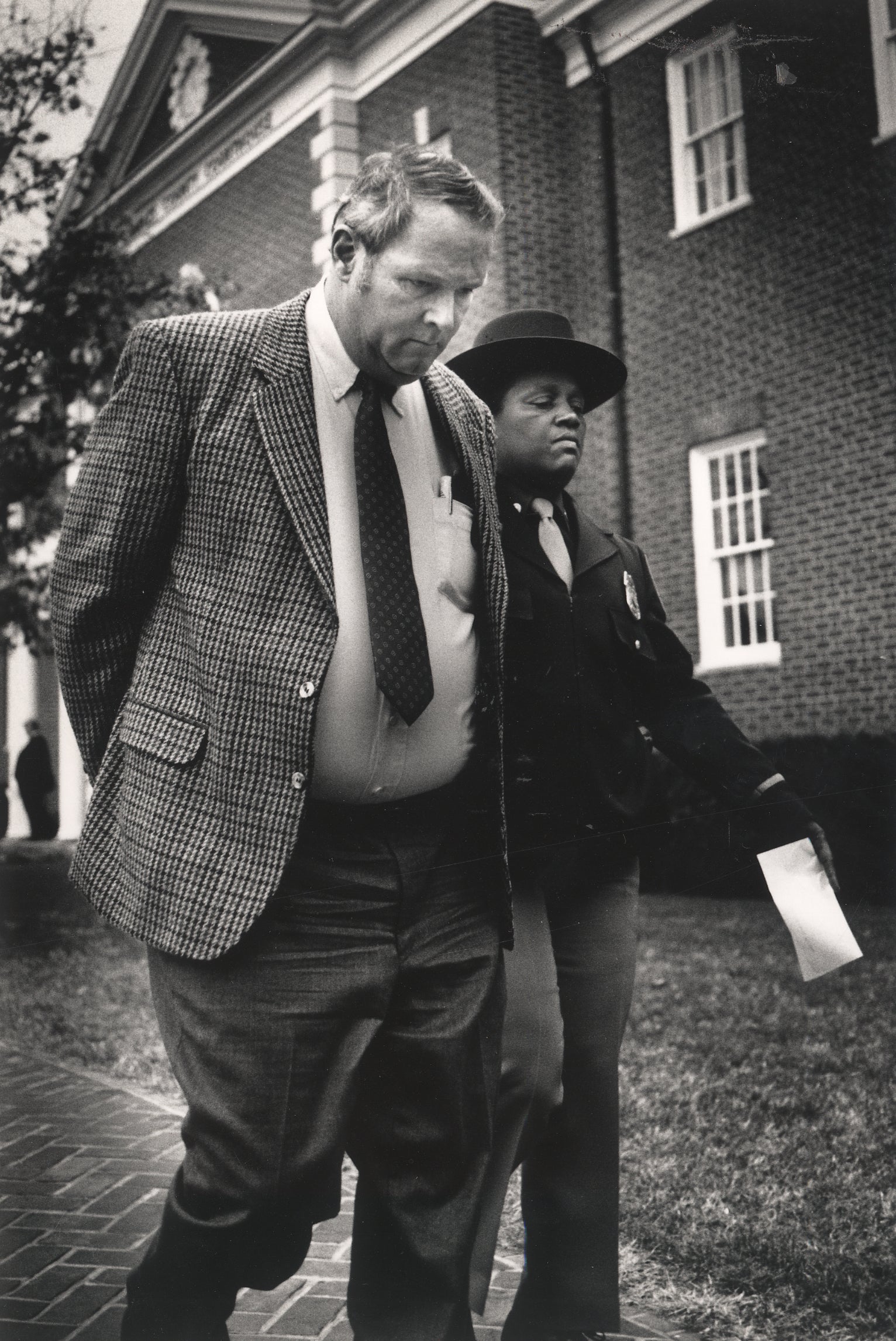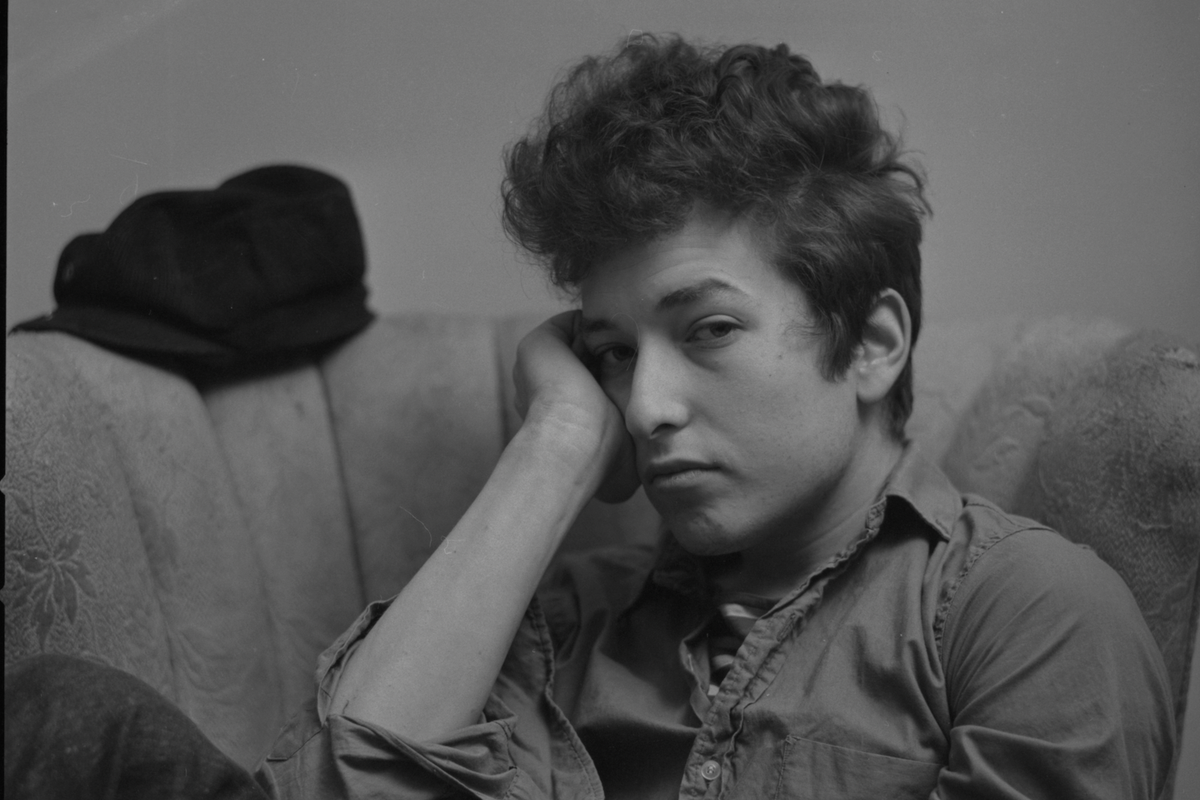In the spring of 1963, a 21-year-old Bob Dylan was on the train reading a copy of Broadside, the left-wing mimeographed publication known for nurturing a number of important folk musicians. Often included in the magazine were photocopied articles from other newspapers, so alongside coverage of an early Dylan song, “Train-a-Travelin’”, was a report in the Baltimore Afro-American by Roy H Wood, with the headline: “Rich Brute Slays N**** Mother of 10.”
On a Friday night in February, William Zantzinger, the 24-year-old owner of a 630-acre tobacco farm, arrived drunk at a charity ball attended by members of high society in Baltimore, Maryland. Hattie Carroll, a 53-year-old single mother to nine children, was among the Black staff members serving the guests. According to reports, Zantzinger – who hit two other Black employees that night – yelled at Carroll using racist slurs, accusing her of not serving him fast enough, and struck her on the head and shoulders with a toy cane. While the blows did not leave a mark, Carroll died the next day at Baltimore’s Mercy Hospital from a stroke brought on by the stress of the attack.
There was outrage among the Black community. As reported in the Smithsonian’s Folklife Magazine, Carroll was a deacon of the Gillis Memorial Church in west Baltimore, as well as a member of the choir and its flower committee. She was well-regarded as a peaceful woman who loved and cared for her children.
But it wasn’t the news of her death that inspired one of Dylan’s greatest protest songs, “The Lonesome Death of Hattie Carroll” – it was the injustice that followed. After initially being arrested and charged with first-degree murder, Zantzinger was fined $625 and handed a six-month sentence for manslaughter and assault – the day after Martin Luther King Jr delivered his “I Have a Dream” speech at the March on Washington for Jobs and Freedom. His sentence was delayed by another two months so he could continue to oversee the operations of his tobacco farms. He apparently told a reporter: “I’ll just miss a lot of snow, and I’ll be back in time for the spring harvest.” Between its coverage of the March, The New York Times ran a much smaller headline on page 15: “Farmer Sentenced in Barmaid’s Death.”
Dylan, who had just performed at the March on Washington, then travelled to Carmel, California to hang out with Joan Baez, her sister, the singer-songwriter and activist Mimi Baez, and her sister’s new husband, the musician and composer Richard Fariña. “His romantic life is, shall we say, complicated at this moment,” the award-winning American historian and Dylan expert Sean Wilentz tells The Independent, alluding to the singer-songwriter’s complex, intense relationship with Joan Baez. “But there he is at this beautiful spot, hanging out, and [Baez] is feeding him salad and red wine.” Baez later observed that the songs were coming out of Dylan “like ticker tape”. Among them was “The Lonesome Death of Hattie Carroll”, which would feature on his third album, The Times They Are a-Changin’.
Two versions of this masterpiece appear on Through the Open Window: The Bootleg Series Vol 18, which captures Dylan’s work between the years 1956 to 1963. One previously uncirculated recording was made by the singer, musician and activist Barbara Dane at a Los Angeles apartment party, which would have taken place just weeks after Dylan wrote the song. “It was somebody’s home so it’s very informal,” Wilentz points out. “That’s the other thing about this [bootleg series] is that a lot of the recordings are very informal, so the quality varies, but we did our best to make them sound as good as they can.” These recordings have a historical value too, he observes, but more importantly, an emotional one. “You can hear him inventing the songs for the first time, [and sense] his connection to the events that were behind [‘The Lonesome Death of Hattie Carroll’] in particular.”

Wilentz wrote the liner notes for the new bootleg series, but also co-produced the project with Steve Berkowitz, the former A&R executive who signed Jeff Buckley to Columbia Records, and who has supervised a number of historical reissues by artists such as Johnny Cash, Miles Davis and Paul Simon. “I’ve always been interested in figuring out where Dylan fits into the larger scheme of ultra-American life,” he says. “I mean, I’m a historian, right? So that’s what I do most of the time.” At the same time, Wilentz has done “a fair amount” of arguing against the allegations of plagiarism that have been made against Dylan over the years. “It’s what [musicologist and father of folk singer Pete Seeger] Charles Seeger called the folk process… You take something and make it your own. You do something different with it.”
Case in point, the lyrics to “Hattie Carroll”, which biographers have pointed out contain a number of inaccuracies about the case, some of which came from the original news report. Dylan sings of Carroll having 10 children, rather than nine, and that he twirled his cane around a “diamond ring finger”. He also describes Carroll as “a maid in the kitchen” and that Zantzinger (whom he calls “Zanzinger” in the song) was bailed “in a matter of minutes” of being arrested (it was, in fact, a matter of hours). Zantzinger, who died in 2009 after being convicted again in 1991, this time over a scam in which he charged Black workers rent for properties he did not own, told Dylan biographer Howard Sounes that the musician’s story in the song was “a total lie”: “I should have sued him and put him in jail.” To Wilentz, though, the song is a reaction not just to the injustice of that one event but to “that whole summer’s worth of trauma”.
“It’s so subtle, and in some ways it’s an anti-protest protest song, because it’s not simply saying, ‘This is a terrible thing,’ it’s telling the story,” he says. “That’s why it’s so brilliant.” Even more so, as Wilentz explains in his liner notes, is how Dylan draws attention to “some of the most salient facts” by not mentioning them at all: the fact that Carroll was Black and Zantzinger was white. “By compelling listeners to fill in what’s missing, the song redoubles the shame and disgust of what happened,” he writes. “At the same time, when Dylan wanted to intensify the song’s anger, he exploited what might be called colloquial redundancy, using more words than formally necessary (as when he mentions Zantzinger’s ‘rich wealthy parents who provide and protect him’).
Enjoy unlimited access to 100 million ad-free songs and podcasts with Amazon Music
Sign up now for a 30-day free trial. Terms apply.
Try for free
ADVERTISEMENT. If you sign up to this service we will earn commission. This revenue helps to fund journalism across The Independent.
Enjoy unlimited access to 100 million ad-free songs and podcasts with Amazon Music
Sign up now for a 30-day free trial. Terms apply.
Try for free
ADVERTISEMENT. If you sign up to this service we will earn commission. This revenue helps to fund journalism across The Independent.
In both the album version and the two recordings that appear on the bootleg series – the other being from his landmark Carnegie Hall concert in New York, in October 1963 – Dylan’s delivery is strongest at the end of the third verse. His voice is waspish, full of contempt, as he sings: “And she never done nothing to William Zanzinger.” Then, in the concluding verse, he points the finger not just at Zantzinger and the courts, but at the “apologists and intellectuals, who, in offering lofty social explanations for evildoing, obscure the evil itself,” Wilentz says. Those themes are still “very much with us,” he adds. “In some ways, it’s always relevant.”
‘Through the Open Window: The Bootleg Series Vol 18’ is released digitally and in 8xCD, 2xCD and 4xLP editions on 31 October. The physical editions will come with a 125-page liner notes essay by Sean Wilentz.


